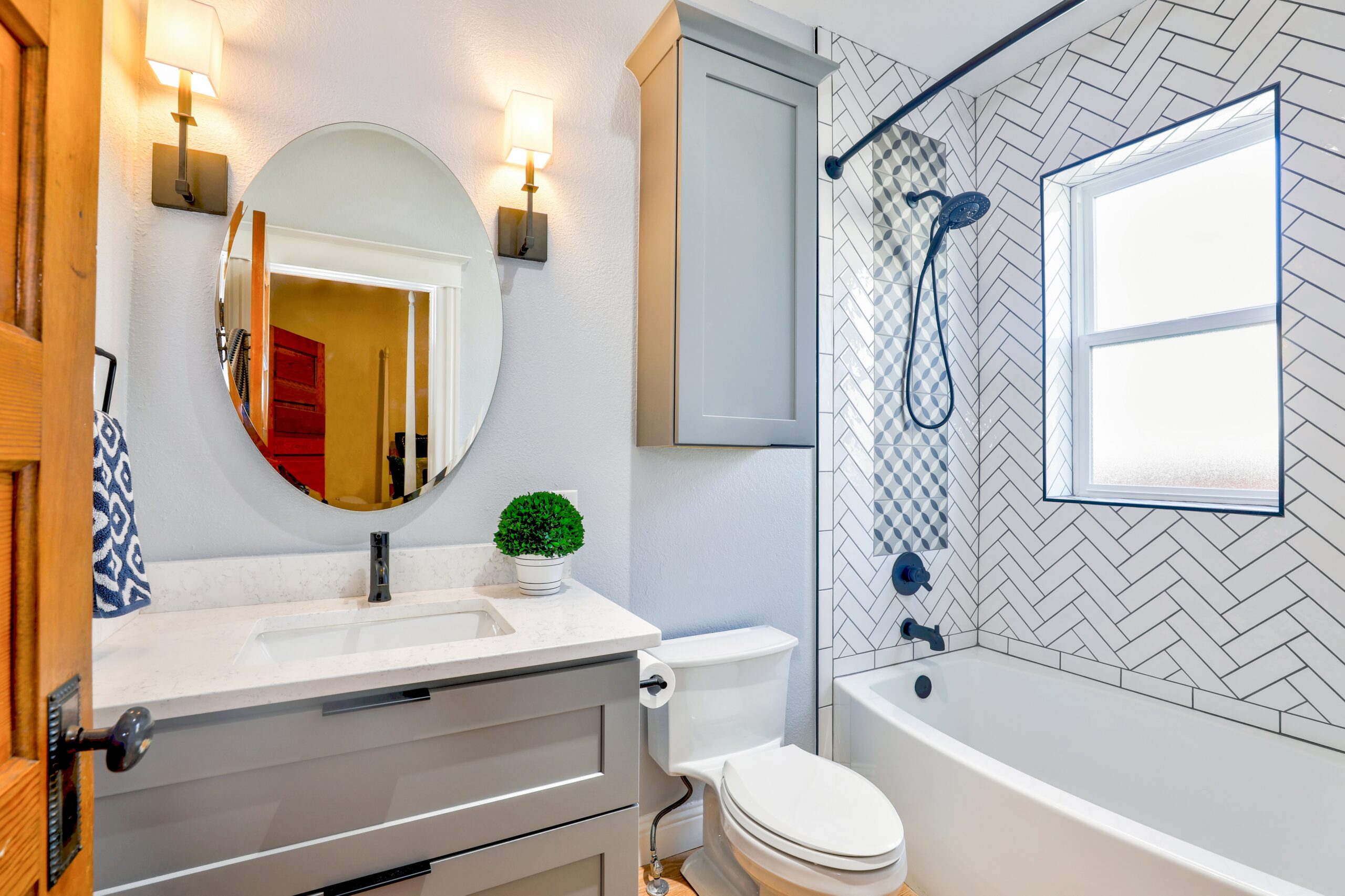Designing a bathroom for accessibility can be a challenging task, but with the right considerations, it can be transformed into a safe and functional space for people with disabilities. Remodeling a bathroom for accessibility can provide independence, safety, and comfort for those who may have difficulty using a traditional bathroom. Here are some key considerations to keep in mind when remodeling a bathroom for accessibility.
1. Flooring
- Choose a slip-resistant flooring material that is easy to clean and maintain.
- Consider installing radiant heating in the floor to provide warmth and prevent slips and falls.
- Choose a flooring material that is easy to roll a wheelchair over.
- Use contrasting colors for the floor and walls to help those with low vision navigate the space.
- Avoid using rugs or other floor coverings that can trip someone up.
2. Shower and Tub
- Install a roll-in shower with a built-in seat and grab bars for added safety and accessibility.
- Consider using a shower bench or stool that can be used for sitting or standing.
- Choose a showerhead that is adjustable and can be easily reached by someone in a wheelchair.
- Use a handheld showerhead that can be used while sitting.
- If a bathtub is desired, consider installing a walk-in tub with a built-in seat and grab bars.
3. Toilet
- Choose a toilet that is the appropriate height for someone in a wheelchair or someone who has difficulty standing.
- Consider installing grab bars near the toilet for added safety and stability.
- Use a raised toilet seat for added comfort and ease of use.
- Use a toilet with a bidet for added hygiene and comfort.
- If space allows, install an accessible toilet with a wider opening for ease of use.
4. Vanity
- Choose a vanity that is the appropriate height for someone in a wheelchair or someone who has difficulty standing.
- Install accessible storage options, such as pull-out shelves or drawers, for ease of use.
- Use a wall-mounted or floating vanity to provide more floor space and easy access.
- Consider using a hands-free faucet for ease of use.
- Use a vanity with a built-in power outlet for added convenience.
Conclusion:
Designing a bathroom for accessibility requires careful consideration of the needs of the users. By choosing the right flooring, shower and tub, toilet, and vanity, a bathroom can be transformed into a safe and functional space for people with disabilities. It is important to keep in mind the safety, independence and comfort of the users while making the bathroom accessible. The use of slip-resistant flooring, grab bars, adjustable showerheads, and accessible storage options can make a big difference in the usability of the bathroom.
Consultation with a professional designer or contractor can help ensure that all necessary considerations are taken into account during the remodeling process. Furthermore, it is important to keep in mind that accessibility is not just for people with disabilities, but also for people of all ages and abilities. It is important to create a space that is comfortable, functional, and aesthetically pleasing for everyone. It is always recommended to hire a bathroom remodeling contractor who has experience in making bathrooms accessible. They can guide through the process and ensure that all necessary modifications are done to the bathroom to make it accessible, safe and comfortable for the users.
